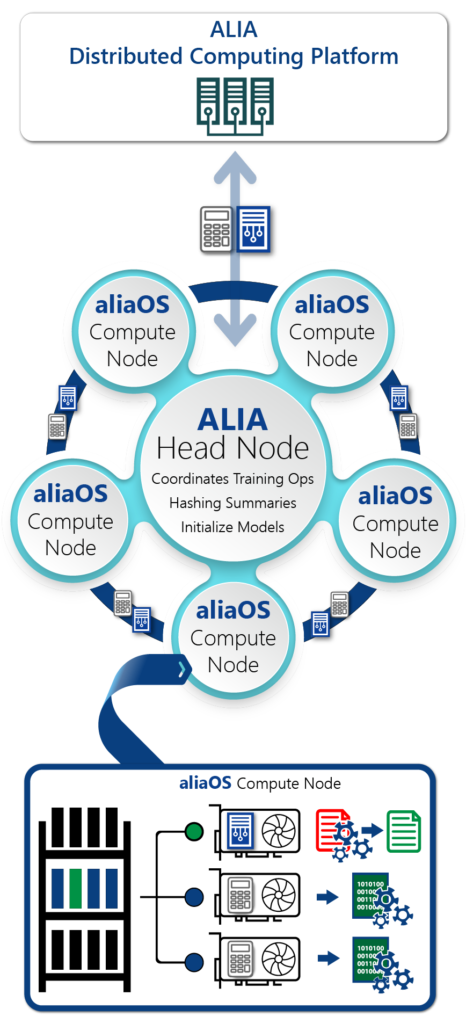Distributed Computing
 The transformational power of accurate machine translations powered by consensus blockchains and incentivized with cryptocurrency inspired us to investigate decentralized neural network computations. Distributing workloads to a computing cluster is a phenomenal breakthrough that directly addresses key inhibitors to rapidly improving NMT translation accuracy rates. Namely, the price of hardware, raw processing power and the speed necessary to train language models and execute document translation tasks.
The transformational power of accurate machine translations powered by consensus blockchains and incentivized with cryptocurrency inspired us to investigate decentralized neural network computations. Distributing workloads to a computing cluster is a phenomenal breakthrough that directly addresses key inhibitors to rapidly improving NMT translation accuracy rates. Namely, the price of hardware, raw processing power and the speed necessary to train language models and execute document translation tasks.
Three key technologies form the foundation of ALIA’s decentralized computing stack;
- Decentralized Networking – aliaOS clusters
- Decentralized Transactions – blockchain
- Autonomous Agents – decentralized decisioning via Tendermint block chain interface
The ALIA distributed computing cluster allows for rapid deployment and management while offering all the benefits of virtualization for the cluster member nodes. Our management system allows for complete automation of the process that handles rapid deployment of clusters on physical hardware.
Becoming an ALIA compute node or miner in the network requires miners to dedicate a computer with the appropriate hardware then simply register to download an install file that will build aliaOS on their machine. When the miner restarts the system, an aliaOS install file will be passed to it from one of the network’s front-end nodes that will automatically detect hardware configuration, install appropriate drivers, modules, and the blockchain interface. AliaOS can support heterogeneous hardware so all nodes in our network do not need to be identical.
aliaOS can be installed from scratch in a very short period of time and different application configurations can easily be installed on individual nodes. This architecture feature insures any that future upgrades will not interfere with running jobs. Any node running aliaOS is considered to be soft state that can be changed and/or updated rapidly. The cluster management process is completely automated so it is faster to reinstall all nodes to a known configuration frequently than it is to determine if nodes are out of synchronization. Efficiency is further enhanced because the operating system will only include absolutely essential components. Taking this approach allows us to harden and securely configure a server by¬ removing unnecessary services, applications, network protocols and configuring user authentication.
Requiring nodes to run aliaOS scales exceptionally well and is highly secure. This approach could open up the doors to cryptocurrency mining for those who do not have the expensive computing infrastructure needed to profitably ‘mine’ digital currencies such as Bitcoin or Ethereum. For professional miners, it has the potential to be significantly more profitable than current mining operations. As is demonstrated in the next few sections, ALIA stands to provide a lucrative alternative to their current operations without all the downward pressure of uncertainty that affects the cryptocurrency markets.
